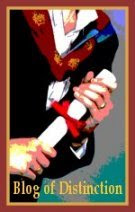
This year, no one needs ask. It arrived in November and has been doing its beautiful thing ever since. We have nearly thirty inches on the ground right now; Ari and I have been trying to make good use of it every way we know how. So far, that’s mostly been snowshoeing and hiking, but I’ve been itching to get back on my cross-country skis, which didn’t make it out of the cellar more than once or twice last year.
As I lug them up the stairs, the caninaturalist flattens her ears and skulks into the other room. Too much noise and too many long, sharp angles for her taste. And even after we make our way outside, she still seems leery of the entire operation. I worry she has forgotten that she loves to ski.
We cut through our backyard and out into the forest behind our house, where we can connect with our neighbor’s elaborate trail system. It’s beautiful here, but Ari still seems reluctant. She trots behind my track, as if concerned that she’ll be run over in front. That may be a fair concern, given it’s been a while since I’ve used my Nordic skis--and it shows.
After a few laps in all the glorious snow and sunshine, she begins to relax. We’re still far from the quiet power of a skijoring dog, but at least the ears are back up and the smile has returned.
We stop periodically to admire the foliage. Only the conifers and beech trees (Fagus grandifolia) still have any leaves; the latter sounds like a concert of ancient rattles as the brittle leaves rap in the wind. The beech has particularly long and fragile buds, and it has evolved to keep its leaves throughout winter as a means of protecting and insulating these buds. This adaptation gives a welcome spot of orange to an otherwise gray landscape.
 Even though dogs can see far more of the color spectrum than humans once thought, it’s the movement of the leaves Ari really loves. She stands below the tree and cocks her head in wonder, or pounces on every—and I mean EVERY—leaf that crosses her path. Most of the time, this results in one very clumsy skier catapulting into the snow, still tethered to the leaf-catching dog.
Even though dogs can see far more of the color spectrum than humans once thought, it’s the movement of the leaves Ari really loves. She stands below the tree and cocks her head in wonder, or pounces on every—and I mean EVERY—leaf that crosses her path. Most of the time, this results in one very clumsy skier catapulting into the snow, still tethered to the leaf-catching dog. Ari spends her own time writhing in the snow on this adventure. Not because she’s fallen or been dragged down (she’s far too graceful for that), but because she’s discovered scat from the whitetail deer (Odocoileus virginianus) buried deep in the snow. Each pile she finds sends her scooching and squirming, hoping she can manage to wedge some of the pellets into her fur to be used as social currency later on. Luckily for me, they’re too frozen for that kind of job.

.jpg)

.jpg)

















